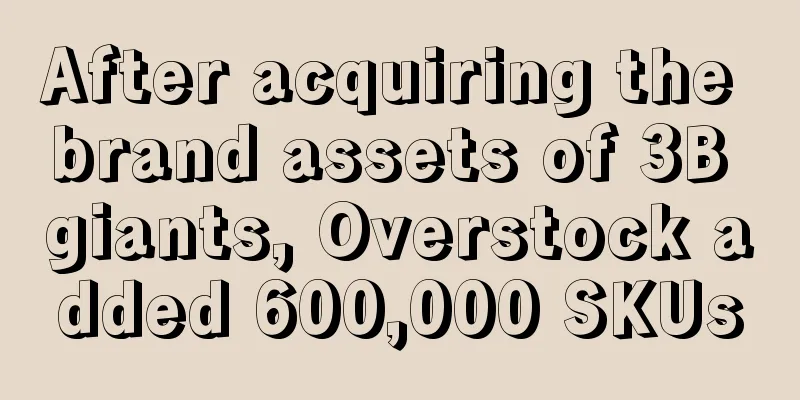High inflation leads to consumption downgrade, and Americans flock to the Internet to buy low-priced goods

|
According to foreign media reports, the continued rise in inflation in the past two years has caused many American consumers to bid farewell to high-end goods and turn to cheaper alternatives. New research from Adobe Analytics explains this trend in online shopping. Across all 11 e-commerce categories tracked by Adobe Analytics, lower-priced items gradually gained market share while higher-priced items lost share from January 2019 to February 2023. The trend is occurring even as inflation continues to cool from a 41-year high hit in the middle of last year. "As inflation hits consumer purchasing power. Consumers are turning to cheaper products offered by online marketplaces," said Vivek Pandya, principal analyst at Adobe Digital Insights. Prices for everything from meat to fruit to eggs have soared over the past two years. In online groceries, the most expensive tier 1 products have fallen from 24.5% of the market in January 2019 to 9% now. But the market share of the cheapest grocery products has grown by 13 percentage points to nearly half the market, Adobe said. "Americans have had to downgrade and give up certain premium products in favor of cheaper ones. In grocery stores, this is reflected in people switching from organic to non-organic fruit," said Vivek Pandya. The cost of food at home has increased 10.2 per cent over the past 12 months, according to the government's February Consumer Price Index inflation report. The shift away from expensive items is one of the reasons why discount food retailers are the fastest growing in the U.S., according to a Tufts University study released earlier this year. Discount supermarkets like Aldi have seen stronger growth in recent years. Beyond food, online shoppers are also trading down on big-ticket electronics, with the market share of the cheapest items surging to 39% from 25% in the past two years, according to Adobe data. "In 2020, consumers were flush with stimulus money and savings. Now they are much more constrained," said Vivek Pandya. Data from Adobe also shows that in January 2019, the most expensive first-tier clothing accounted for about one-fifth of the market, but now, it accounts for only one-tenth. Even expensive toys have taken a back seat. The most expensive online toy tier has risen from 25% of the market four years ago to 13% today. In January 2019, expensive personal care products accounted for 31% of the market, but in February of this year, these higher-priced personal care products accounted for only 7% of the market. In contrast, cheaper personal care products doubled their market share during this period to 54%. "It's clear that retailers are dealing with a very price-conscious consumer, and it will take some time for the U.S. consumer to unlearn that behavior given the economic pressures they are facing," added Vivek Pandya. Editor ✎ Nicole/ Disclaimer: This article is copyrighted and may not be reproduced without permission. |
<<: Google officially opens Bard public beta, starting with the UK and the US
>>: "2022 US E-commerce Market Data Report": These two categories have the largest growth
Recommend
Quantitative criteria for high success rate of Amazon product selection
text Choosing products with high success rates is ...
Sorting 20,000 pieces per hour! DHL opens 100,000 square feet distribution center!
DHL Express has opened a 100,000-square-foot autom...
Amazon sellers surge in number! Ad spending tops the world
Recently, an overseas research organization relea...
What is BareKsa? BareKsa Review
BareKsa, an Indonesian financial management platfo...
Do you have to show your work to your boss? How to complete a solid market research report within 24 hours? I hope you can give me some suggestions.
Anonymous user My C position The recent work exper...
Amazon's peak season is coming. How can we create hit products without using black technology?
This year is as difficult as last year for seller...
Winter storm is coming back! Amazon and UPS issue delivery delay warning!
According to foreign media reports, on January 31,...
What is Cross-border e-commerce B2B export overseas warehouse 9810? Cross-border e-commerce B2B export overseas warehouse 9810 evaluation
Cross-border e-commerce export overseas warehouse ...
What is ShipWorks? ShipWorks Review
ShipWorks can track and process store orders and i...
What is Wallex? Wallex Review
Founded in 2015, Wallex provides a range of online...
France is paralyzed! 800,000 people are on strike, arson and looting continue, and sellers' goods will...
The word "strike" is not new in foreign...
What is Keyhole? Keyhole Review
Keyhole tool can track #hashtag, @account, keyword...
How to restore ranking after being out of stock for a month
How to restore ranking after being out of stock f...
What is ALDI? ALDI Review
ALDI is a German supermarket chain that mainly sel...
Big event of the week! AliExpress opens the function of uploading EU CE certification qualifications for mask-related categories
Amazon's supply cut-off and strict control ma...









